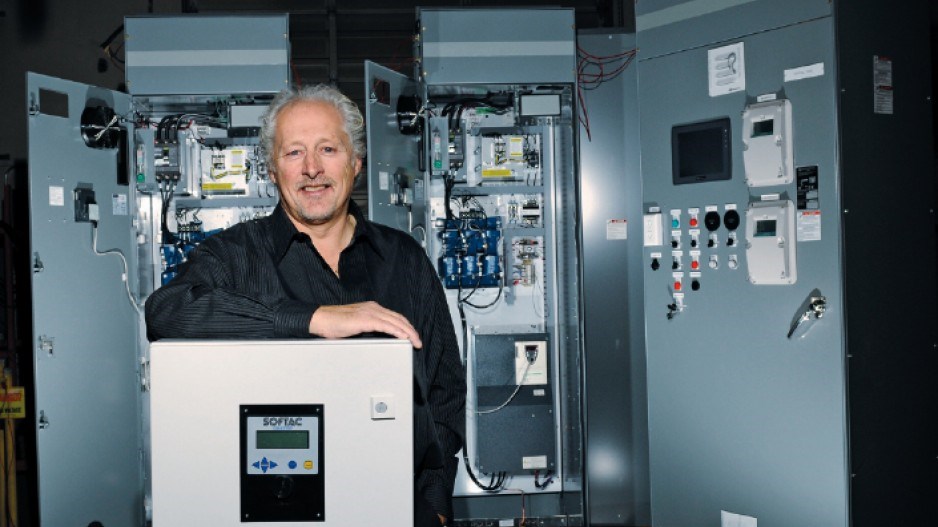In 1995, when a 6.9-magnitude earthquake hit Kobe, Japan, much of the ensuing damage and death resulted not from collapsing buildings but from fire. More than 6,000 buildings were destroyed by fire.
Although there’s no way of preventing an earthquake or tsunami, new technology developed in Vancouver can at least lessen the risk of fire triggered by ruptured natural gas and power lines during an earthquake, says Ian Bowman, president and CEO of Softac Systems Ltd.
“It could be catastrophic,” Bowman said. “If you have technology that’s not expensive that could go into a building and help try and limit some of that, surely there has to be some use for it somewhere.”
Softac recently began taking orders for QuakeTrip, which detects wave acceleration peculiar to earthquakes and automatically shuts off utilities.
The City of Surrey has ordered three QuakeTrips and plans to install one at Bridgeview Community Hall, which is undergoing renovation. The U.S. government has also bought one for an undisclosed military installation in Southeast Asia.
Similar technology is used at nuclear reactors and major dams, but Bowman said the systems cost millions of dollars. The QuakeTrip, by contrast, costs $5,000 and can be installed by any electrician in any building with a power supply, including a single-family home.
“This is the first commercially available, compact, complete earthquake utility shutdown device,” said Bowman, whose company makes custom designed scanning and control systems for sawmills and the mining sector.
A couple of years ago, after a downturn in B.C.’s forestry sector slowed orders for Softac equipment, Bowman decided to diversify and focused his company’s technical know-how on developing QuakeTrip, which is patented in the U.S. and Canada.
Although its main function is to cut power supplies during a quake, it can also be wired to shut off valves for water and gas lines.
“We can send an emergency signal to an elevator to have it go through its emergency stop procedure in the event of an earthquake,” Bowman added. “We could start remote generators for emergency power. The beauty about it is that you have to manually switch that circuit breaker back on again.”
A recent string of earthquakes along B.C.’s Pacific coast has raised concerns over the safety of the 75-year-old Pattullo Bridge.
Bowman said there’s not much that could be done for motorists who are already on a bridge when an earthquake hits. But he said traffic lights at either end of the bridge could be tripped red by QuakeTrip as soon as a tremor is detected to prevent anyone else from driving onto the bridge.
Fires could be so widespread in the aftermath of an earthquake that fire departments would have to prioritize their response. Bowman believes QuakeTrip could dramatically reduce the strain on fire departments during a quake.
The QuakeTrip uses an accelerometer that detects movement in a building. To avoid having the power to an entire shopping mall cut in the event a delivery truck plowed through a wall, multiple sensors can be deployed throughout the building and set to trip only when two or more sensors receive the same readings.
Should the technology prove effective, Trenton Poy, president of Mountainview Insurance, said he can imagine insurance rates being lower for building owners who install devices like QuakeTrip.
“Most of the damage in earthquakes are actually the fires,” Poy said. “Those are horrendous claims. If it looks viable, it would be no different than having a burglar alarm.”




